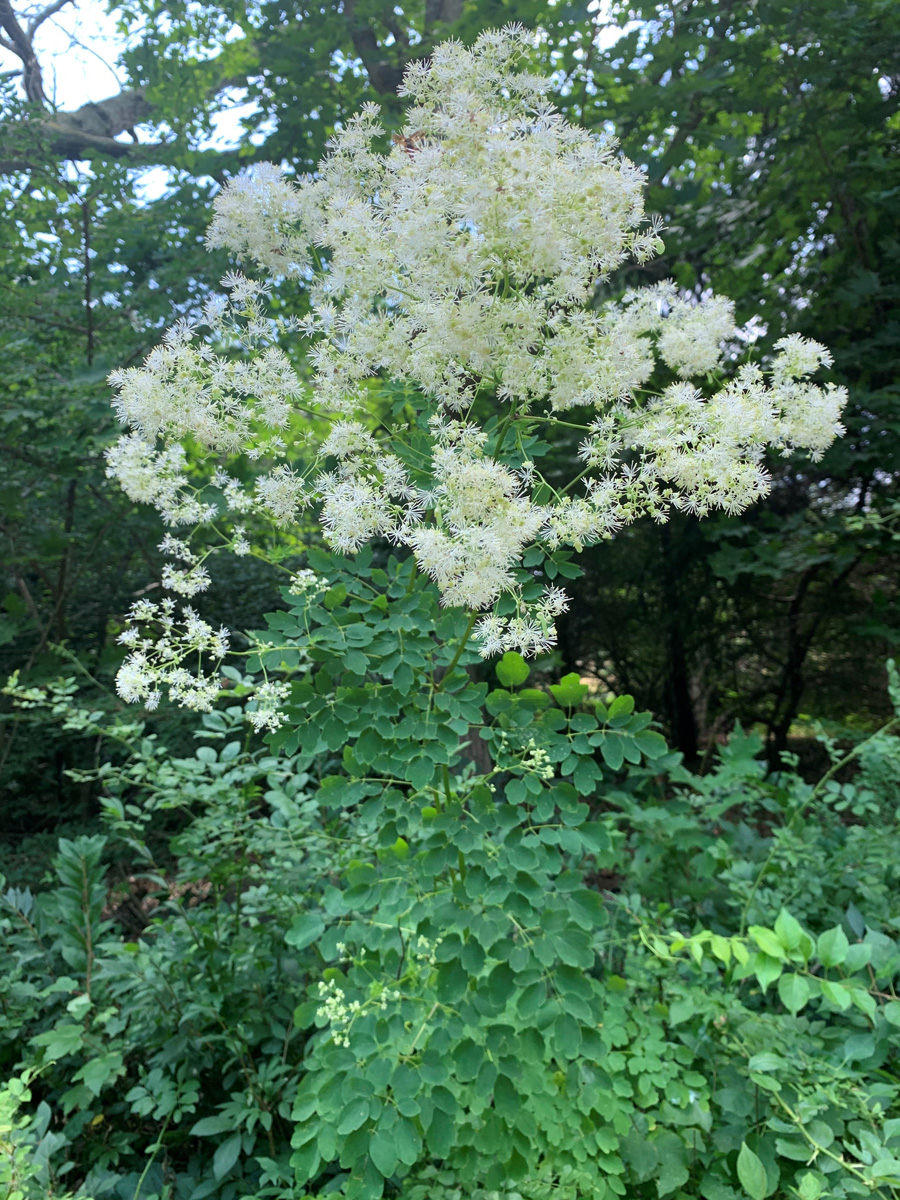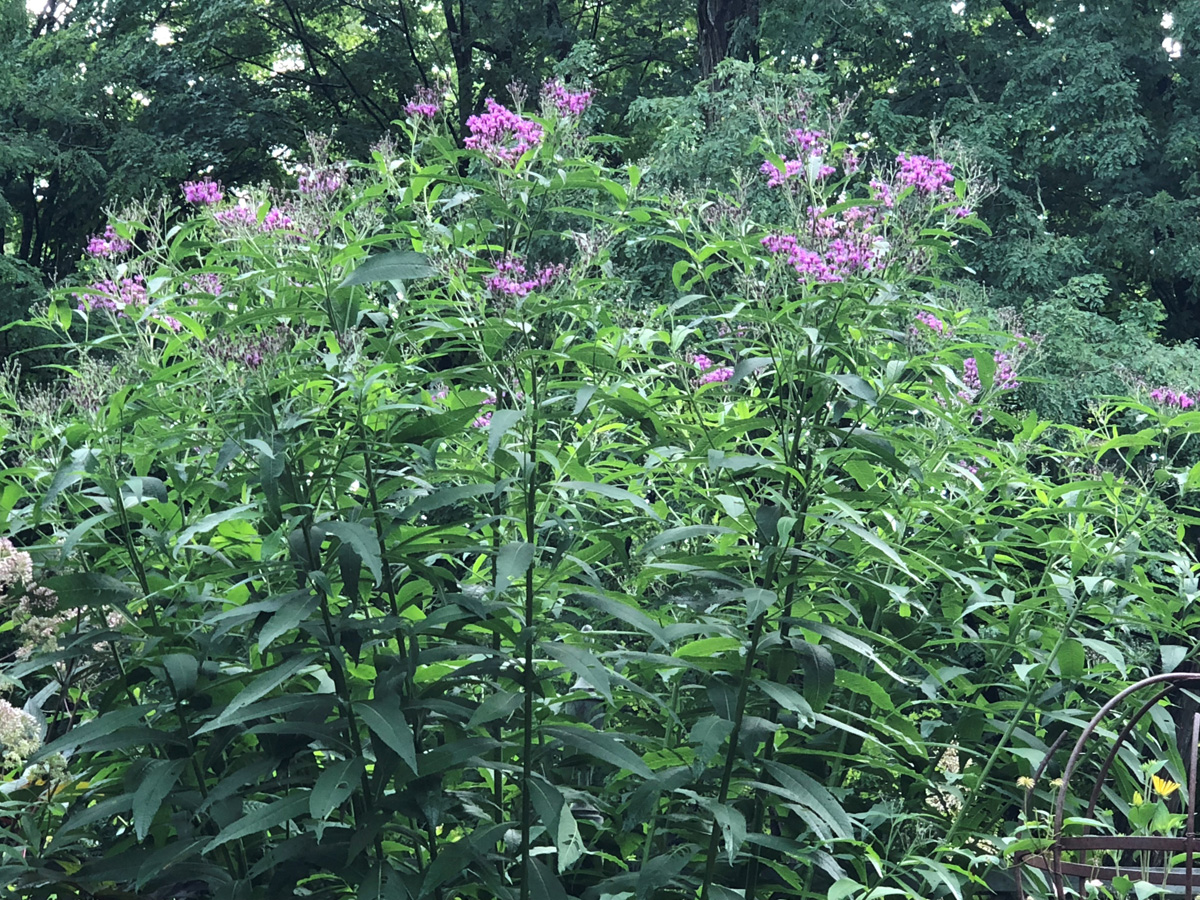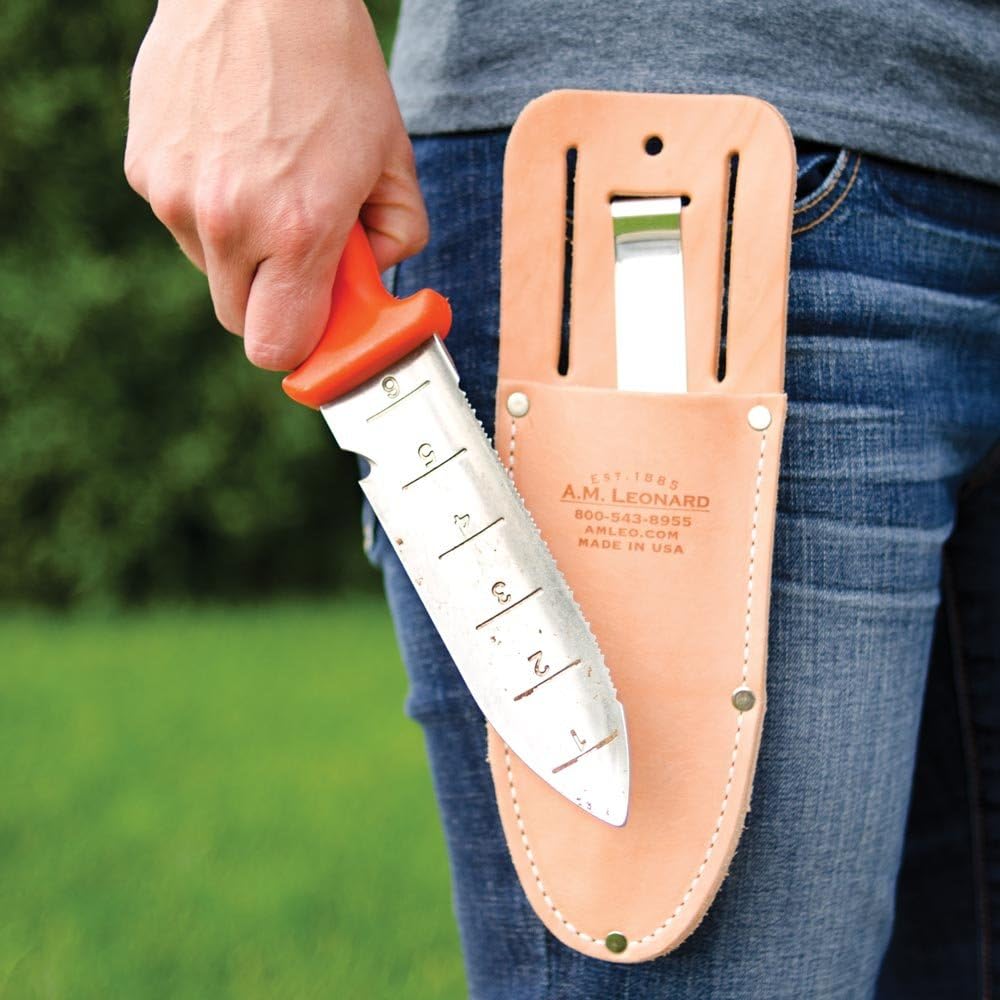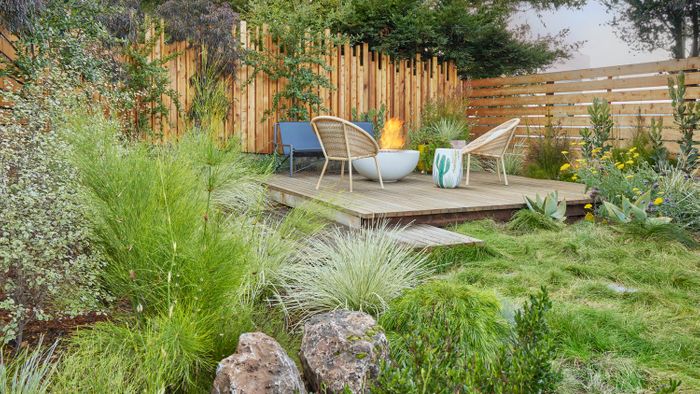
It’s hard to deny that the Midwest hosts the lion’s share of tall and dramatic native perennials, but we in the Northeast also have some statuesque species that will make arresting additions to your garden. In addition to using them for their ornamental appeal, growing these regionally native plants can help to ameliorate habitat loss and provide food for local wildlife. The following three perennials also happen to have similar growing conditions and can be grown together in the same design.

Tall meadow rue
Name: Thalictrum pubescens
Zones: 3–8
Size: 3 to 8 feet tall and 2 to 3 feet wide
Conditions: Average to moist soil; full sun to full shade
Native range: Eastern North America
Tall meadow rue is a whiplash plant. When you drive past it in full bloom, you are likely to whip your head around and say, “What is that tall, graceful creature?” Not only does tall meadow rue stand out with its dainty, bluish foliage and wispy, white, fringy flowers, but it blooms in midsummer. That time tends to be a lull for native flowers. This rue performs well in partial shade but looks its best in full sun and moist soil in cooler climates. It may require some staking, or plant it with a supporting cast of shorter plants such as cardinal flower (Lobelia cardinalis, Zones 2–8), bee balm (Monarda spp. and cvs., Zones 4–9), or great blue lobelia (Lobelia siphilitica, Zones 4–8), which generally bloom at the same time. Tall meadow rue is also a great addition to a butterfly garden and a food source for a variety of caterpillars.

Turk’s-cap lily
Name: Lilium superbum
Zones: 5–8
Size: 4 to 9 feet tall and 2 to 3 feet wide
Conditions: Average to moist soil; full sun to partial shade
Native range: Eastern North America
With a botanical epithet like “superbum,” it’s got to be good, and be sure to look for that name when purchasing, because “Turk’s-cap” can also be used to refer to several nonnative lily species. A strong patch of this giant orange chandelier of a plant can take time and effort to establish, but with proper siting and protection from deer, the reward is rich. In the wild, Turk’s-cap lily suffers from poaching and pressure from lily leaf beetles, so incorporating it into your garden can help this species survive. The hummingbirds and butterflies that pollinate it will be pleased that you made the effort. It also happens to look beautiful when rubbing shoulders with tall meadow rue, as it also blooms in midsummer!

New York ironweed
Name: Vernonia noveboracensis
Zones: 5–9
Size: 5 to 8 feet tall and 3 to 5 feet wide
Conditions: Moist to dry soil; full sun to partial shade
Native range: Eastern North America
If the previous two plants have an air of preciousness, New York ironweed is the opposite. It’s a horse of a perennial, ready to dominate the rear of a bed in late summer. The flower color is variable and ranges from magenta pink to deep purple, but all shades look sharp with the dark green stems and foliage. There’s also a white-flowered selection, ‘White Lightning’, to provide further dramatic contrast. This plant usually supports itself well, but chopping a few stems in early summer will result in some stouter sections to keep the plant upright and bushy. Ironweed can fit in just fine in a more manicured setting, especially with some pruning, but if you have the space to let it run wild, try the classic northeastern trifecta of later bloomers: New York ironweed, Joe Pye weed (Eutrochium purpureum, Zones 4–9), and a taller goldenrod, such as stiff goldenrod (Solidago rigida, Zones 3–9), smooth goldenrod (Solidago gigantea, Zones 3–8), or grass-leaved goldenrod (Euthamia graminifolia, Zones 3–9).
Try out any one of these perennials by itself, or try them all together to add height and drama to the back of your borders this summer.
And to discuss these plants or ask other gardening questions, chat with the author on the Gardening Answers forum.
For more Northeast regional reports, click here.
For more recommendations on native perennials for the Northeast, check out:
- Great Native Plants for the Northeast
- Best Native Woodies for the Northeast
- Regional Picks: Best Natives – Northeast
Chloë Bowers is a landscape designer based in Newtown, Connecticut.
Photos: Chloë Bowers
Fine Gardening Recommended Products

A.M. Leonard Deluxe Soil Knife & Leather Sheath Combo
Fine Gardening receives a commission for items purchased through links on this site, including Amazon Associates and other affiliate advertising programs.



















Comments
Log in or create an account to post a comment.
Sign up Log in